Showing Spotlights 529 - 536 of 2880 in category All (newest first):
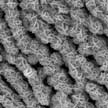 Researchers have successfully produced durable antiviral surfaces that inactivate SARS-CoV-2 within 6 hours. In contrast, on various non-nanostructured surfaces or smooth surfaces, the SARS-COV-2 virus remained viable for up to 48 hours. These results provide evidence that surfaces that are structured with specific nanoscale surface features are effective in preventing SARS-CoV-2 and the subsequent environmental spread. Such nanostructured surfaces can be used in hospital environments and can be extended to other industrial sectors and public infrastructure such as transportation, where fomites or contaminated surfaces are carriers for viral infections.
Researchers have successfully produced durable antiviral surfaces that inactivate SARS-CoV-2 within 6 hours. In contrast, on various non-nanostructured surfaces or smooth surfaces, the SARS-COV-2 virus remained viable for up to 48 hours. These results provide evidence that surfaces that are structured with specific nanoscale surface features are effective in preventing SARS-CoV-2 and the subsequent environmental spread. Such nanostructured surfaces can be used in hospital environments and can be extended to other industrial sectors and public infrastructure such as transportation, where fomites or contaminated surfaces are carriers for viral infections.
Sep 18th, 2020
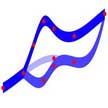 A major challenge for nanophotonics engineers is the wide range of optical responses that metamaterials and other nanoplasmonic structures can generate. In the past few years, machine learning has emerged as a powerful tool for sifting through this vast universe of possible design parameters to aid the design of nanophotonic devices tailored for specific applications. A novel approach uses a type of neural network called a mixture density network to solve the non-uniqueness problem of machine learning algorithms, while also improving accuracy.
A major challenge for nanophotonics engineers is the wide range of optical responses that metamaterials and other nanoplasmonic structures can generate. In the past few years, machine learning has emerged as a powerful tool for sifting through this vast universe of possible design parameters to aid the design of nanophotonic devices tailored for specific applications. A novel approach uses a type of neural network called a mixture density network to solve the non-uniqueness problem of machine learning algorithms, while also improving accuracy.
Sep 17th, 2020
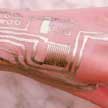 Skin-interfaced, wearable electronics have attracted significant attention due to their unique roles in preventative monitoring, diagnostic confirmation, and convenient therapeutic options. The ultimate application of these bio-integrated devices for practical and convenient applications hinges on the seamless integration of on-body sensors with wireless transmission modules. As a promising direction toward this class of integrated systems, soft body area sensor networks include on-body sensors for physiological signal monitoring and flexible printed circuit boards for signal conditioning/readout and wireless transmission.
Skin-interfaced, wearable electronics have attracted significant attention due to their unique roles in preventative monitoring, diagnostic confirmation, and convenient therapeutic options. The ultimate application of these bio-integrated devices for practical and convenient applications hinges on the seamless integration of on-body sensors with wireless transmission modules. As a promising direction toward this class of integrated systems, soft body area sensor networks include on-body sensors for physiological signal monitoring and flexible printed circuit boards for signal conditioning/readout and wireless transmission.
Sep 15th, 2020
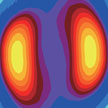 Researchers have provided an example of on-demand control of quantum phenomena to design the quantum materials. By state-of-the-art quantum mechanical simulations, they find that a two-dimensional transition-metal ditelluride, MoTe2, can realize a structural phase transition from the semiconducting phase to the topological phase triggered by photoexcitation of carriers alone. The sub-picosecond phase transition can be controlled by varying the laser wavelength. The research is inspired by the classical phase transition theory proposed by Lev Davidovich Landau and Rudolf Ernst Peierls.
Researchers have provided an example of on-demand control of quantum phenomena to design the quantum materials. By state-of-the-art quantum mechanical simulations, they find that a two-dimensional transition-metal ditelluride, MoTe2, can realize a structural phase transition from the semiconducting phase to the topological phase triggered by photoexcitation of carriers alone. The sub-picosecond phase transition can be controlled by varying the laser wavelength. The research is inspired by the classical phase transition theory proposed by Lev Davidovich Landau and Rudolf Ernst Peierls.
Sep 14th, 2020
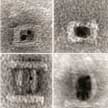 DNA is probably the most programmable biomaterial for creating a wide range of rationally designed and functionally enhanced nanostructures. The sophisticated, programmable, and addressable DNA nanostructures are strong candidates for constructing nanoelectronic devices. The size of DNA molecules is also key: DNA double-helix has a neighboring base pair distance of 0.34 nm and a diameter of 2.1 - 2.6 nm a, and thus DNA complex-based nanoelectronics may break the 5-nm processing limit of commercial silicon-based semiconductors.
DNA is probably the most programmable biomaterial for creating a wide range of rationally designed and functionally enhanced nanostructures. The sophisticated, programmable, and addressable DNA nanostructures are strong candidates for constructing nanoelectronic devices. The size of DNA molecules is also key: DNA double-helix has a neighboring base pair distance of 0.34 nm and a diameter of 2.1 - 2.6 nm a, and thus DNA complex-based nanoelectronics may break the 5-nm processing limit of commercial silicon-based semiconductors.
Sep 10th, 2020
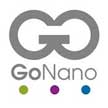 The EU-funded GoNano project explored how co-creation can be used to enhance the responsiveness of nanotechnology research and innovation. Responsiveness is understood as the capacity and willingness of researchers and developers to integrate societal considerations in the early stages of technology development. Over the course of three years, GoNano brought together citizens, civil society organizations, industry, researchers, and policymakers across Europe to align future nanotechnologies with societal needs and concerns.
The EU-funded GoNano project explored how co-creation can be used to enhance the responsiveness of nanotechnology research and innovation. Responsiveness is understood as the capacity and willingness of researchers and developers to integrate societal considerations in the early stages of technology development. Over the course of three years, GoNano brought together citizens, civil society organizations, industry, researchers, and policymakers across Europe to align future nanotechnologies with societal needs and concerns.
Sep 9th, 2020
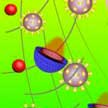 Biofilm formation is an important adaptation and survival strategy commonly employed by bacteria but, unfortunately, a major cause for infections in humans. Researchers have now demonstrated the safe removal of in vivo bacterial biofilms through artificial nanomotors driven by near-infrared laser light. This is the first demonstration of a self-propelled antibiofilm platform capable of conducting photothermal and antibiotic therapy in the deep layers of biofilm, achieving high therapeutic efficiency in vivo without damaging healthy tissues.
Biofilm formation is an important adaptation and survival strategy commonly employed by bacteria but, unfortunately, a major cause for infections in humans. Researchers have now demonstrated the safe removal of in vivo bacterial biofilms through artificial nanomotors driven by near-infrared laser light. This is the first demonstration of a self-propelled antibiofilm platform capable of conducting photothermal and antibiotic therapy in the deep layers of biofilm, achieving high therapeutic efficiency in vivo without damaging healthy tissues.
Sep 8th, 2020
 Radiative cooling is a passive cooling strategy for lowering the temperature of an object without consuming energy or emitting pollution. However, this cooling method becomes ineffective when heat accumulates continuously in an enclosed space, such as a stationary vehicle exposed to direct sunlight. Researchers propose a Janus thermal emitter that acts as a selective emitter on the top side and a broadband emitter on the bottom side. This design effectively draws heat from an inner space and the surface, because the bottom side can absorb thermal input in a broad spectral range, while the top side emits heat into space without disturbing ambient radiation.
Radiative cooling is a passive cooling strategy for lowering the temperature of an object without consuming energy or emitting pollution. However, this cooling method becomes ineffective when heat accumulates continuously in an enclosed space, such as a stationary vehicle exposed to direct sunlight. Researchers propose a Janus thermal emitter that acts as a selective emitter on the top side and a broadband emitter on the bottom side. This design effectively draws heat from an inner space and the surface, because the bottom side can absorb thermal input in a broad spectral range, while the top side emits heat into space without disturbing ambient radiation.
Sep 7th, 2020
 Researchers have successfully produced durable antiviral surfaces that inactivate SARS-CoV-2 within 6 hours. In contrast, on various non-nanostructured surfaces or smooth surfaces, the SARS-COV-2 virus remained viable for up to 48 hours. These results provide evidence that surfaces that are structured with specific nanoscale surface features are effective in preventing SARS-CoV-2 and the subsequent environmental spread. Such nanostructured surfaces can be used in hospital environments and can be extended to other industrial sectors and public infrastructure such as transportation, where fomites or contaminated surfaces are carriers for viral infections.
Researchers have successfully produced durable antiviral surfaces that inactivate SARS-CoV-2 within 6 hours. In contrast, on various non-nanostructured surfaces or smooth surfaces, the SARS-COV-2 virus remained viable for up to 48 hours. These results provide evidence that surfaces that are structured with specific nanoscale surface features are effective in preventing SARS-CoV-2 and the subsequent environmental spread. Such nanostructured surfaces can be used in hospital environments and can be extended to other industrial sectors and public infrastructure such as transportation, where fomites or contaminated surfaces are carriers for viral infections.
 Subscribe to our Nanotechnology Spotlight feed
Subscribe to our Nanotechnology Spotlight feed





